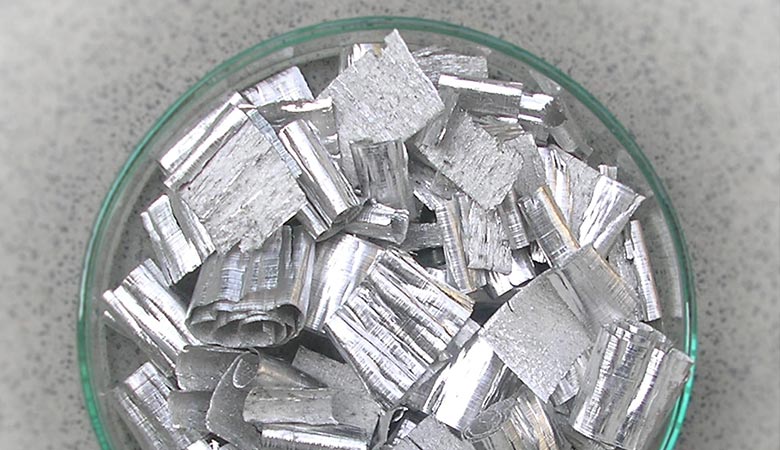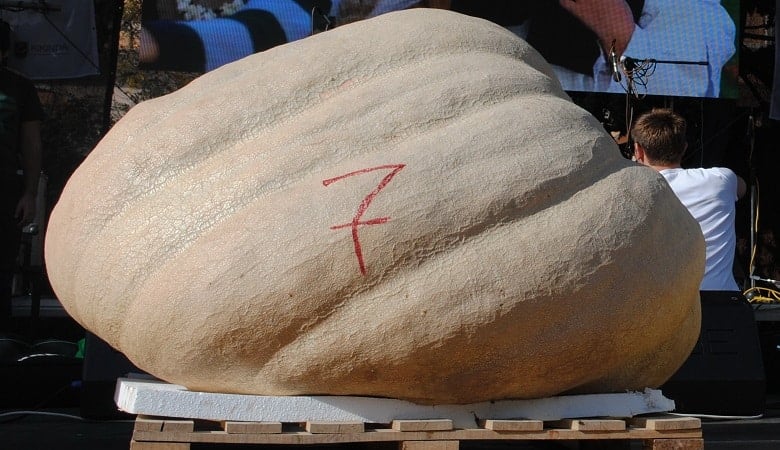The adage “make hay while the sun shines” and “find a needle in a haystack” are both examples of hay usage in idioms. The former, which is quite old, dates from the Middle Ages.
The process of making hay was frequently hampered by rain. As a result, farmers had little choice but to harvest hay when the sun shone. However, the idiom’s meaning is to take advantage of a favorable situation while it lasts.
On the other hand, the latter is frequently used to describe anything extremely difficult or even impossible to accomplish.
For most people, this is the most common knowledge and usage of hays they are familiar with, however, this article aims to go into greater depth regarding hays, specifically how much a bale of hay weighs.
Hay; Its Constituents And Uses
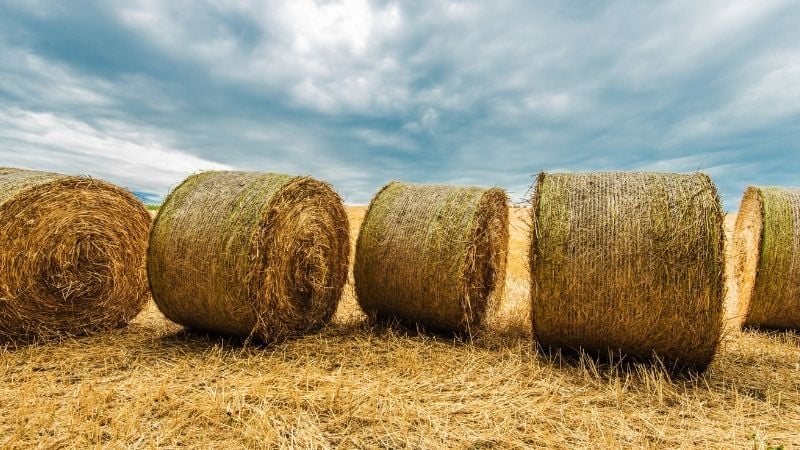
Hay is grass, legumes, or other herbaceous plants that have been cut and dried for use as animal fodder, whether for big grazing animals like cattle, horses, goats, and sheep or smaller domesticated animals like rabbits and guinea pigs. Pigs consume hay, but they do not digest it as well as herbivores.
When there is not enough pasture or rangeland on which to graze an animal or when grazing is not possible owing to weather (such as during the winter), or when lush pasture alone would be too rich for the animal’s health, hay can be used as animal feed. It’s also fed when an animal doesn’t have access to pasture, such as when it’s kept in a stable or barn.
Because most grazing animals on pasture ingest fodder in many feedings throughout the day, most animals are fed hay in two daily feedings, morning and evening, for the convenience of people.
How to Make Hay
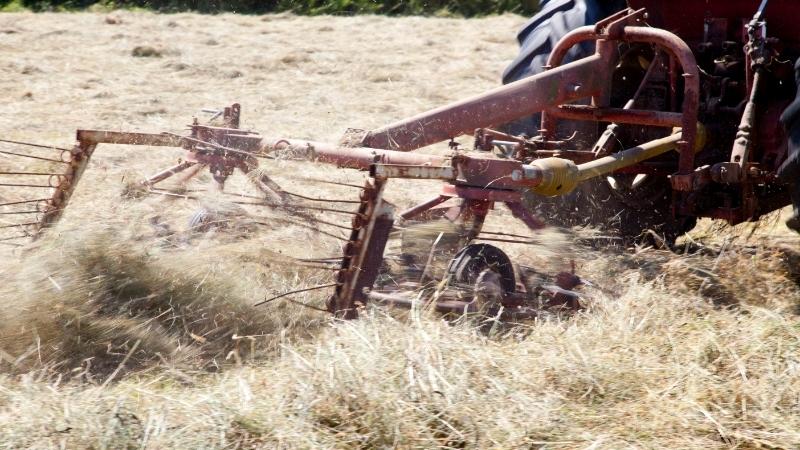
Making hay is a multi-step process that includes cutting, drying, or “curing,” raking, processing, and storing the finished product. Even if hay fields are not reseeded every year, consistent fertilization and overseeding every few years can assist enhance yields.
Hay-making methods and terminology have changed dramatically through time, and regional variances still exist today.
By the 1930s, most hay production had been mechanized thanks to the development of agricultural gear such as the tractor and the baler. Tractors are commonly used to pull balers, and larger balers necessitate higher horsepower tractors.
There are two types of mobile balers: those that harvest and bale hay in one pass and those that separate the two processes. In 1940, they were first invented, and they have since been refined to produce a variety of bales of various sizes.
The end product of a baler is a large wrapped or bound bundle of hay.
Different Weights And Sizes Of Hay Bales
Hay bale weight can be difficult to estimate due to a variety of characteristics, including its size, moisture level, and density, all of which have a role to play in determining a bale’s overall weight.
Generally, Hay bales can weigh anywhere from 40 to 2,000 pounds (18 kg to 907 kg). Round and square are the two basic forms of hay bales.
Round hay bales are typically quite large, weighing between 600 and 1,600 pounds (272 kg to 544 kg). Square hay bales on the other hand typically come in two sizes; small and large. The majority of small square bales can be handled by hand. Bale handling equipment, such as a tractor with a bale lift, is required for large square and round hay bales.
Round Hay Bales
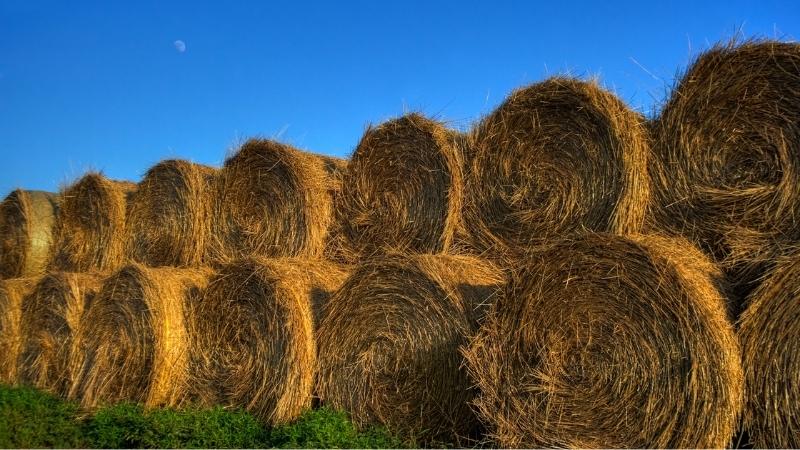
Around 40 years ago, round bales, often known as rolls of hay, began to appear in fields. These bales are now the most widely used due to the ease with which they can be handled and transported.
A tractor-mounted front loader with a particular spike attachment is typically used to handle round bales. Special wagons and trailers are used for short-distance transport.
A unique set of challenges arises when transporting round bales over long distances. Bales falling off trucks are a common cause of truck accidents due to their round shape and difficulty in securing them. Also problematic is constructing a safe load that is heavy enough to keep shipping costs down.
A circular bale of alfalfa or other legumes, 4’x4′ in size, weighs roughly 600 pounds (272 kg). The weight of a 4’x5′ bale is 950 lb (430 kg). Lastly, a 6-by-6-foot bale weighs around 1500 lb (680 kg).
A timothy bale weighs 20% less than an alfalfa one. As much as a quarter of a bale’s weight might be affected by moisture content.
Below is a table to help with more insights on the weight of round bales;
| Size | Dimension(Width X Height ) | Weight |
| Small | 4ft x 4ft | 400 to 600 lbs |
| Medium | 5ft x 4.5ft | 720 to 950 lbs |
| large | 6ft x 6ft | 1300 to 1500 lbs |
Square Hay Bales
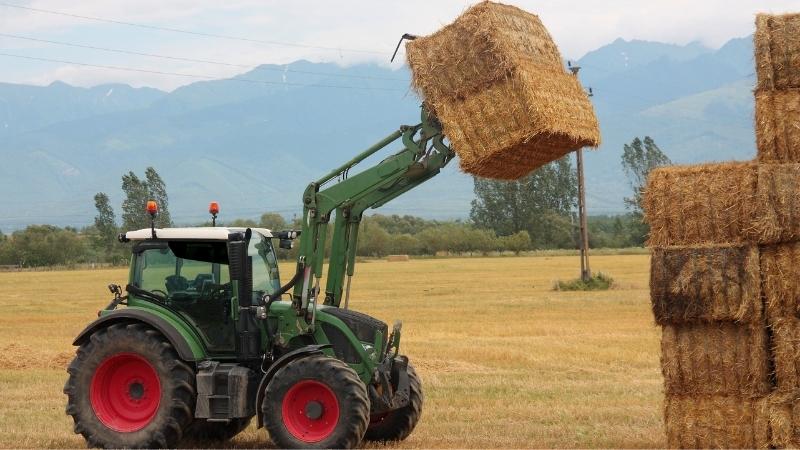
In terms of size, square hay bales can be divided into two broad categories: small and large. More than a century ago, small square bales were the most common type of hay bale.
Little animal breeders and landscapers are among the many people who use them, as do horse owners and those who need to handle small amounts of hay.
Storage and transportation costs are being reduced by producing compact square bales with a high density.
Small square hay bales are of three types namely; 2 String, 3 Wire, and High-Density square hay bales, and their weights are represented in the table below;
| Type | Dimensions( Width X Height X Length) | Weight |
| Two string square hay bales | 18” wide x 14” high x 36” long | 40 to 60 lbs |
| Three wire square hay bales | 22” wide x 16” high x 44” long | 80 to 120 lbs |
| High density square hay bales | 18” wide x 14”high x 36” length | 120 to 180 lbs |
From the above table, you can notice that three-wire square hay bales and high-density square hay bales have the same dimensions but entirely different weights.
This is due to the employment of a “High-Density Bale Compression System” to create high-density bales (bale press). The bale press compresses hay from standard hay bales to make them weigh 2 to 3 times as much as a standard bale of the same size. This is a significant benefit in terms of transportation and storage.
Large square bales, on the other hand, are a 40-year-old invention. They have a number of advantages over small square and round bales, including the ability to ship them and the ability to stack them in storage areas.
Another important feature is the ability to be handled by forklifts and front-end loaders. On many farms and hay-growing operations, these large bales have supplanted their smaller counterparts.
They typically weigh 1000 to 2000 pounds and are 3 feet wide, 4 feet tall, and 8 feet long.
Conclusion
Finally, it’s crucial to remember that the aforementioned weight estimations are approximations and that each bale of hay has a specific moisture content that affects its weight.
As a result, producing bales of the same weight is usually exceedingly difficult. It is preferable to use a weighing scale to accurately measure the weight of the hay bales.




